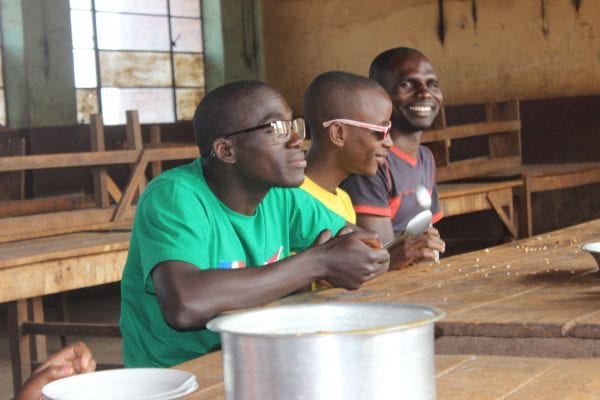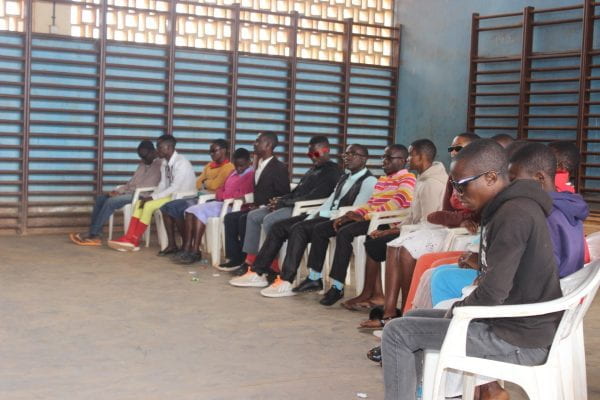Social and Academic Integration for Visually Disabled Youth – Gitega, Burundi
 Kévin Irakóze is an international student from Burundi studying Philosophy in the University of Chicago Humanities Division. He will use the grant for his project Social and Academic Integration for Visually Disabled Youth. This project aims to promote peace in Gitega, Burundi by empowering visually disabled youth and addressing the stigma experienced by these young people through community engagement, social support, and through the formal educational system. The country of Burundi has only three schools for the visually disabled, all of which formally end at the conclusion of elementary school. Children who finish this foundational education have meager options and are left to the life-long care of their families. The vision of this project is to brighten the prospects of the students both in terms of classroom development and a sense of social belonging. Whereas they currently experience a marginalizing shortage of support (material and social), the contribution of the project is to empower them with the hitherto needed support. The project will have a lasting and sustainable impact on the students, the school, and the community.
Kévin Irakóze is an international student from Burundi studying Philosophy in the University of Chicago Humanities Division. He will use the grant for his project Social and Academic Integration for Visually Disabled Youth. This project aims to promote peace in Gitega, Burundi by empowering visually disabled youth and addressing the stigma experienced by these young people through community engagement, social support, and through the formal educational system. The country of Burundi has only three schools for the visually disabled, all of which formally end at the conclusion of elementary school. Children who finish this foundational education have meager options and are left to the life-long care of their families. The vision of this project is to brighten the prospects of the students both in terms of classroom development and a sense of social belonging. Whereas they currently experience a marginalizing shortage of support (material and social), the contribution of the project is to empower them with the hitherto needed support. The project will have a lasting and sustainable impact on the students, the school, and the community.
May 7, 2021
Hello, my name is Kevin Irakoze, I am from Gitega, Burundi and I am a 4th year PhD student in Philosophy. It is a great pleasure to run the project Social and Academic Integration for Visually Disabled Youth this summer in Gitega. Disability in general, and visual disability in particular, is a great hindrance to education for Burundian youth. The project takes this realization as a starting point and seeks to support visually disabled high school students at Lycée Notre Dame de la Sagesse. The school, though a regular high school, started an initiative whereby students with various disabilities (mainly speech, hearing, and vision) can attend classes with other students. Life in the classroom is a rather beautiful one: sign language interpreters in classes, braille instructors copying student notes, etc. Heretofore visually disabled students had access only to a special school which often ended early and left the students with no option for the continuation of the studies. Not so beautiful an image. However, despite the high school’s efforts, behind the wonderful picture of diversity in the classroom lie difficulties that keep the disabled students behind their classmates insofar as various aspects of education are concerned. Among these one can cite the lack of sufficient essential materials, including slates and styluses the students use to take braille notes, or the absence of a braille or audio library for the students to read or listen to books. This project seeks to address some of these difficulties.
As I prepare the first steps of the project implementation, I am filled with gratitude and excitement. Gratitude, first, to the Davis Projects for Peace and Mrs. Kathryn W. Davis for generous provision of the funds and, secondly, to International House for continued support and guidance in the process. And excitement in anticipation of the impact that the project will have on its beneficiaries, the students.
Thinking of the pandemic that we are currently living I reflect on how the current world situation affects the project. In the original plans, I hoped to purchase most of the need material (e.g. computers, braille embossers) from the US. But the impossibility of that now, as I sit in Burundi, call for creativity in securing the needed materials locally in a way that still satisfies the goals of the project as planned. Some part of this week was spent in an initial assessment of the availability of these needed items or of appropriate replacements when needed. Additionally, as the implementation of the project involves other actors, I have been setting up meetings with relevant collaborators. These include the authorities in charge of the school that the students attend and merchants. I look forward to the next couple of months to see how the project will turn out.
July 9, 2021
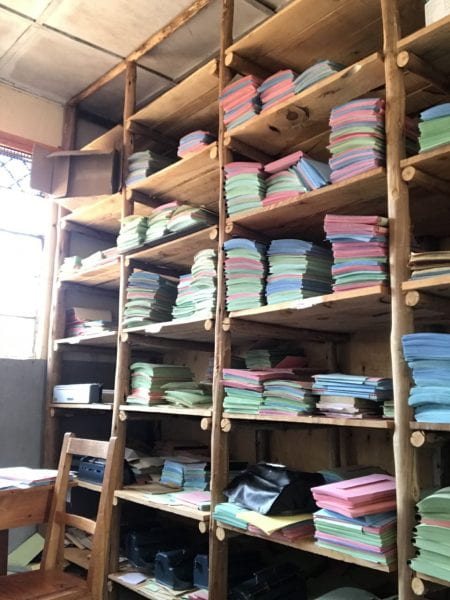


Meeting the students has been the highlight of this project thus far. For since its conception, the project has been an idea, more or less. Even if it is true that the students were the origin of the conception. Indeed, it all began with a short documentary that detailed the life of the students at their high school and the joys and challenges of their academic and social life. The details in the documentary included a call for assistance which moved me at the time even though I could not then conceive of any clear avenue for such assistance. It was a bit later that the call for applications for the Davis Projects for Peace came and the thought of the students’ lives resonated with the call.
The school compound was lively as we reached the place, I and Adelin, a friend who works with disability related organizations in Burundi. The liveliness of the place was a bit of a surprise for a weekday, for the usual atmosphere of a high school in Burundi is quiet and contained. But we soon learned that the students were preparing for their final exams and thus the commotion. As we walked through the compound, we met some students that Adelin works with, two girls with physical disability and a couple boys with visual disability. We exchanged greetings. The high school is a national laboratory for a national education project of inclusive learning. The idea is to provide education opportunities for students with various disabilities within the setting of the available educational structures. This being the first such initiative at the high school level, the school functions as a laboratory since the inclusive learning project is in its trial phase. The goal is for the same model of learning to be moved to other educational institutions. Prior to this, students with various disabilities attended their own specialized schools.
We first met the school authorities to introduce the Davis Project. The principal of the school was very receptive and enthusiastic about the idea and expressed gratitude. He then graciously introduced us to the inclusive learning system and how it works at his school. Then, he later introduced us to the students and the teachers that assist them on a daily basis. The teachers’ tasks include, among other things, taking notes in braille for students, translating tests and exams, and advocating for the students in general.
The students were a wonderful group to speak to and their enthusiasm about the project further solidified the importance of the project. We spoke with them about the goal of the project, listened to accounts of their daily life and laid out the plan for the next two months with them. We asked for their input as well. We left feeling useful concreteness about the project and its potential impact.
August 16, 2021
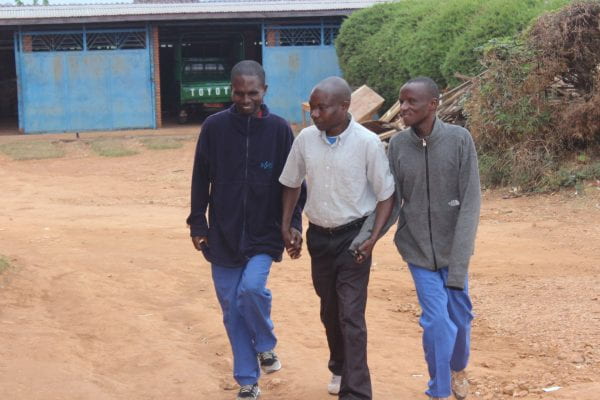
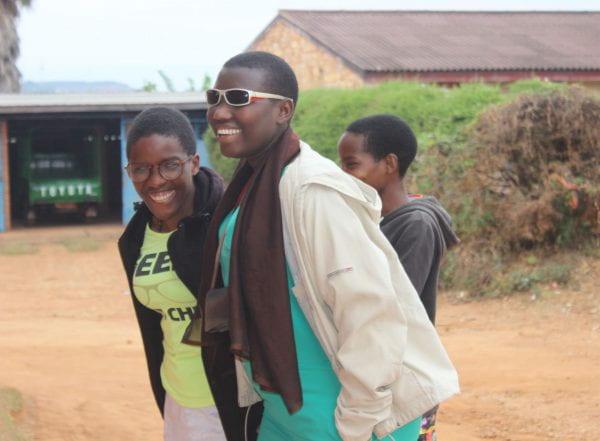
An important part of the project was to respond to the social needs of the students. To that effect, we held a one-week camp. The aim was to create a spirit of togetherness among the students, to help them imagine their future professional and personal lives through examples, and to allow for their voices to be heard beyond the campus via a national radio station.
A bit of context: The school where the project is held is the first of its kind in the country. Education for the blind and hard of hearing is usually provided through specialized schools. The blind students for example attend boarding schools where the only students they interact with also share the disability and the teachers are appropriately trained to assist them. While this has its many benefits, such education ends usually with high school, at best, since the specialized schools do not strictly follow the national curricula that provide access to national exams for access to university. Moreover, the schools often emphasize vocational training in their approach to education. In response to this, a national program was started for the sake of “integrative” learning, meaning that students of all kinds of disability should be in the same schools as non-disabled students. This is a huge undertaking because an integrated school requires a lot of changes in terms of structural accessibility, the training of teachers, the provision of specialized learning materials, etc. In light of this, the ministry of education started this as a pilot program with only one school: the Lycée Notre Dame de la Sagesse in Gitega.
Because this is a pilot program, there is a lot of trial and error involved and this has deleterious effects on the students’ experiences both in and outside the classroom. We’ll return to the material needs later, but for now, the social needs. Imagine a school that has been in place since the 1920s, functioning as a regular high school with no considerations for accessibility. It is now 100 years later, and the school is tasked of welcoming students with all kinds of disability, both physical and mental. And these students are to study and live with the rest of the students in the same structure save for some minor changes to support the students (e.g. the provision of sign language teachers, braille copyists, etc.). Try as it may, the school will have serious challenges which will have an effect on the students’ social wellbeing.
For the one-week camp, we brought the students back to school from home – the school year had ended a couple weeks earlier. This was the first time they were brought together in such a selective way, and we hoped to give them a sense of their having a community and a support mechanism with peers. Each day, we would have presentations on select topics (disability rights, mental health, sexual health, professional development, advocacy, etc.). We would also have play time which aimed at showcasing the students’ various talents. Towards the end of the week, we held a testimony day where we invited blind persons who have established careers to speak to the students about their professional and personal lives. In addition, a journalist from the Radio Culture Nderagakura, the official national radio for the ministry of education, was present both to give a testimony of her own (as a disabled person) and to record the conversations and grievances of the students to air on radio.
The impact of the week was immense, to judge from the students’ assessment at the end. For most of them this was the very first time they felt that their lives mattered, that they had rights that protected them, that they saw older blind people living successful professional and personal lives. One could see the joy and the reignited hope for the future in their faces. To conclude the week, we held a small get together where the students expressed their thanks and hopes. The highlight was a series of songs that they all sang together, with an unbelievable harmony and deep emotion. I teared up with joy at the sight of the impact that the project was making manifest in such a short time.
